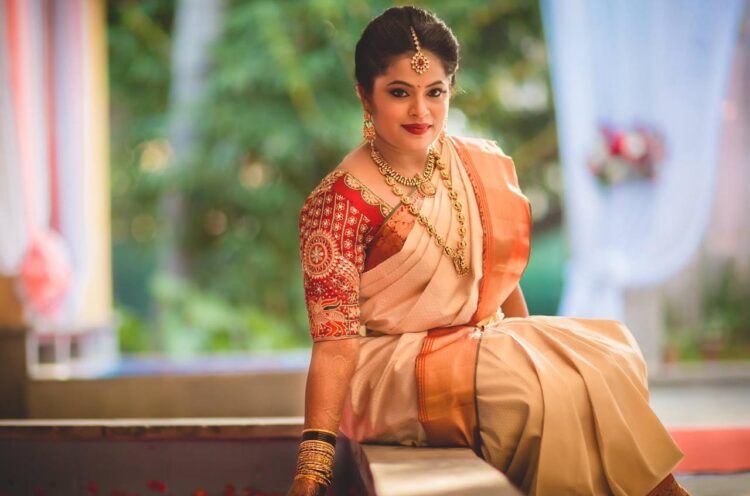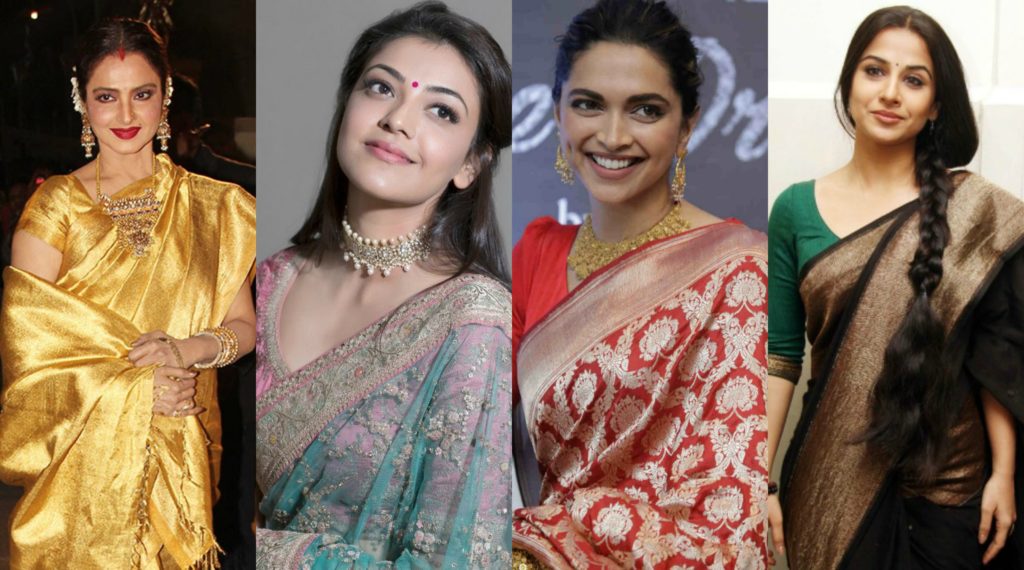The development of sarees in India gives a vast history of the different regions involved in the process, but you may not know that each region essentially has its own traits when it comes to making silk sarees. Among these regions is Kanchipuram, a town in the southern state of Tamil Nadu – and this is among the finest quality you can get in the country, making it also one of the most expensive forms.
The Kanchipuram saree is basically the answer to the Banarasi saree, which also happens to be more popular. However, it is also not one you can wear on any occasion – because of the heavy fabric it uses, as well as the deep colors that have golden hints, this is normally worn during festive celebrations such as when a woman is getting married.
Because it is not easy to spot the fakes, you need to have background knowledge on the history of the fabric. Read on for more.
Table of Contents
The origins
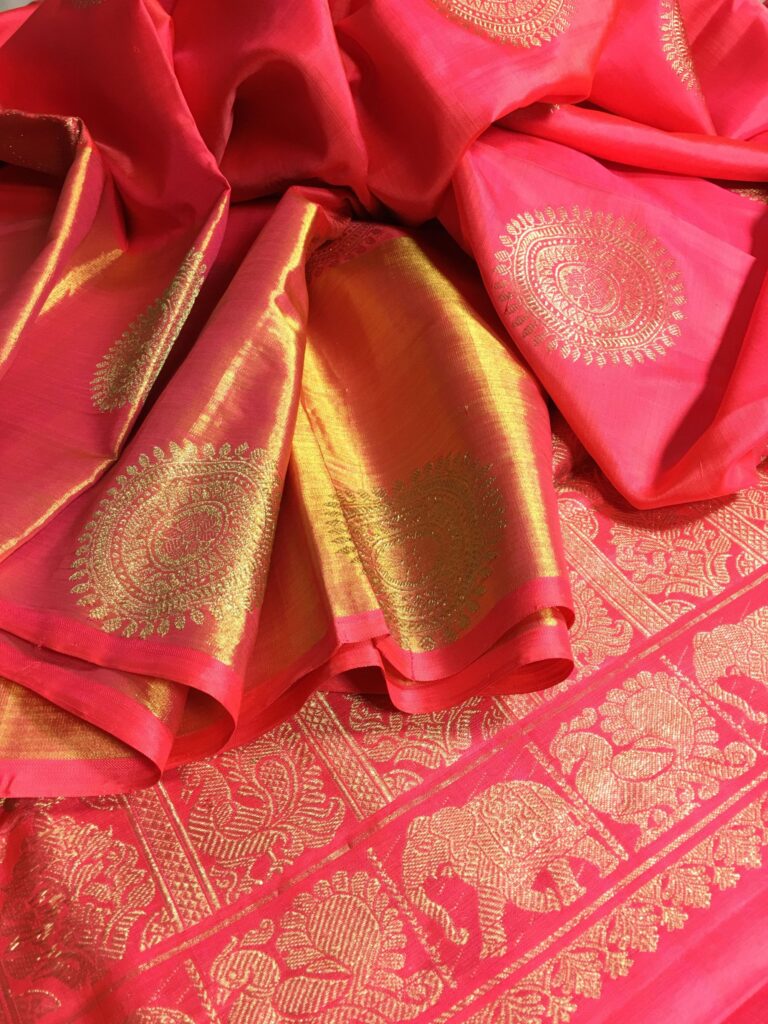
source: indyvogue.com
For the Kanjeevaram silk saree, its origin is rooted in the ancient mythology of the Hindu religion. Legends have it that the descendants of the Sage Markanda were the original silk weavers of this silk type, and the sage was considered to be a master weaver for the Gods.
The art of saree weaving in this region dates back to 400 years, and it mainly became popular during the rule of Krishna Devaraya. There were two main weaving communities in the region that merged their skills to create it, the Saligars and the Devangas. They migrated into Kanchipuram and began to make sarees that depicted the local temples and figurines, which became immensely popular in South India.
The weaving process
They are made from pure silk from the mulberry plant. Even though the silk is from this region, the silver zari and the pure gold originate from Gujarat instead.
When making the silk threads, the material is dipped inside rice water and then dried in the sun. This increases its stiffness and thickness. The weaver will then interlock the silk threads with thin wires made from silver, and then a golden thread is used to continue with the procedure.
The reason why this silk saree is very strong is due to the interweaving of the threads and material. The weft has a minimum of 250 to 3,000 threads, while the warp has 240 threads and the warp frame 60 holes. The body of it, as well as the border and pallu, will go through separate weaving processes, and then are interlocked together with high accuracy and neatness.
Types of Kanchipuram sarees
Pure zari and pure silk
These are the original type of Kanchipuram sarees and the most expensive, and the parts are weaved together using three silk threads.
Silk/polyester mix and pure zari
They have a similar look to the original version, although they cost and weigh less. It is common for them to have artificial silk instead of the natural one, and they are woven using one thread only.
Half fine zari and pure silk
They are the most common version of Kanchipuram sarees you will get. Their colors and designs are attractive and they are lightweight, and they are the most affordable version. The only problem they have is that they can turn black with time due to deterioration, and the zari is not pure.
Basic features
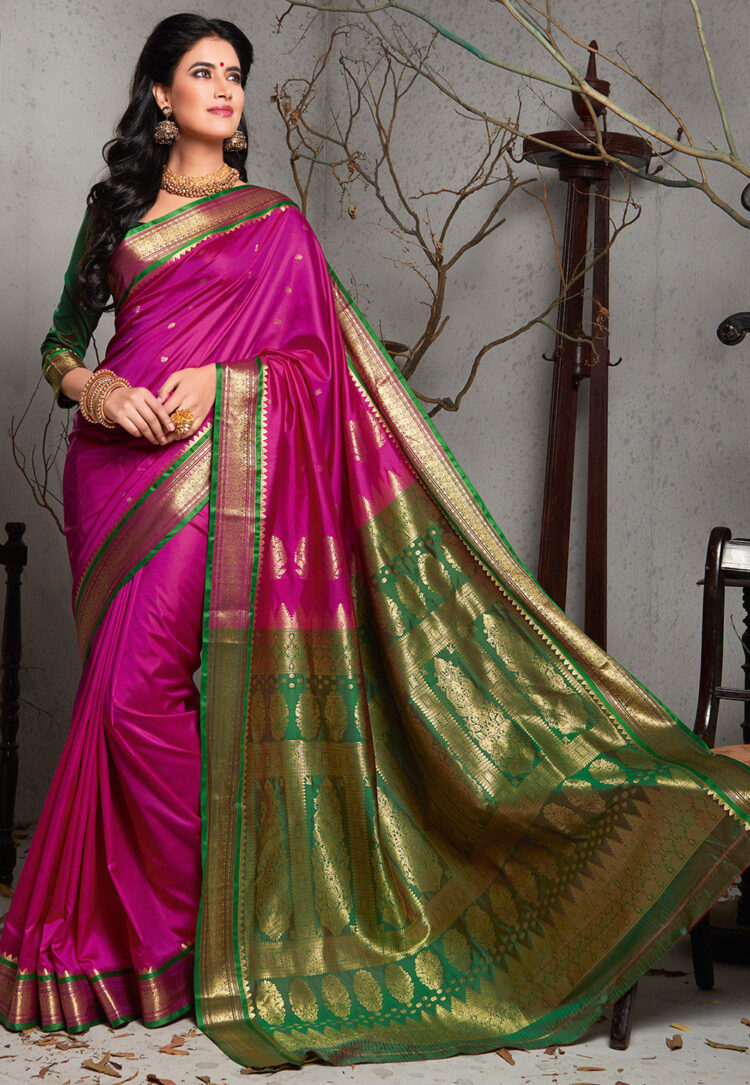
source: utsavfashion.com
Designs
It is easy to find the designs of the saree and pallu being different from each other since the weaving process of each part is done separately. However, all Kanchipuram sarees tend to have zigzag patterns where the pallu and body meet, and this pattern is known as the pitni.
The border of it can also go through a separate weaving process then joined to the body and pallu, through a process known as Korvai – this is done under very strict accuracy since it has implications of the final saree.
The material is very strong and also durable, thanks to the silk threads and the use of silver wire to twist them. However, this also makes it quite heavy compared to other types, and it is not uncommon to find a typical one weighing at least two kilos.
Colour
All Kanchipuram sarees have very interesting designs that catch your attention immediately, including in their use of colors. The designs are mainly inspired by the figurines and scriptures from the temples.
Note that the body and pallu can be in contrasting shades since they are likely to be different in their basic design and color. However, that makes the overall look even more interesting and elegant. A major feature is the borders, which are normally wide and add to the glam factor.
What is the current state of this art form?
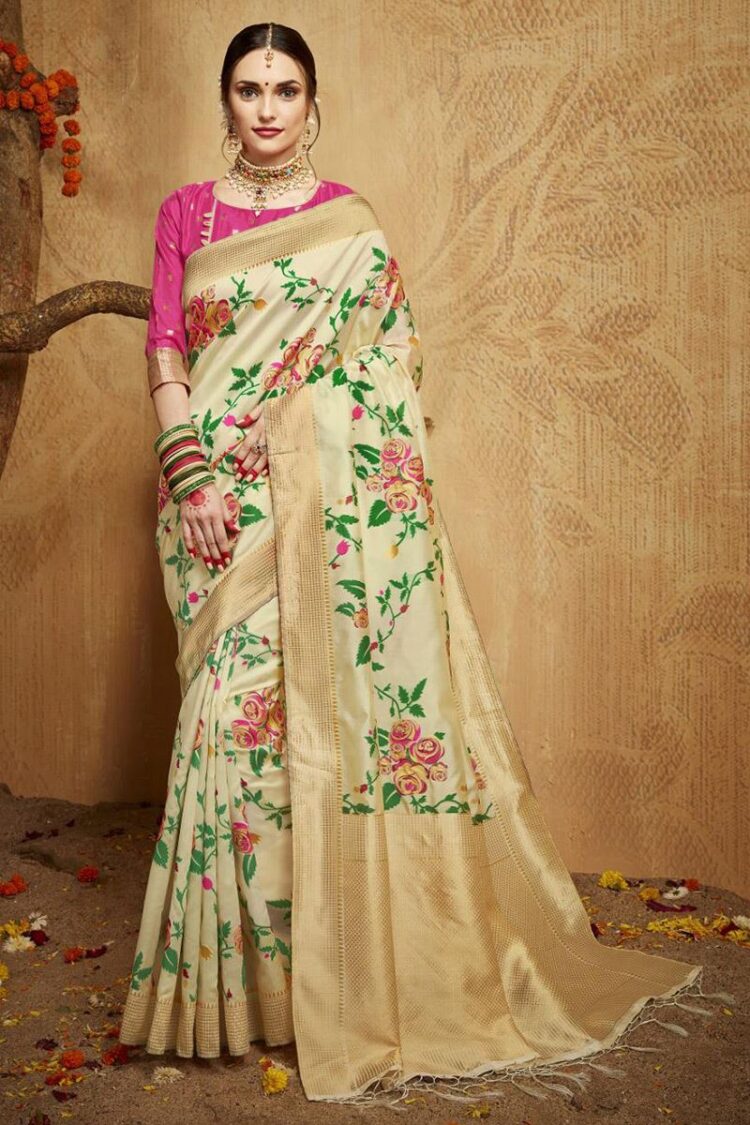
source: rajshrifashions.com
Since 2006, the government has recognized the art form of Kanchipuram sarees as a geographical indication. Because of this move, the sales of it have increased because of the hallmark of ‘authentic fashion’. The other good news is the increasing participation of weaving families in the process of making these sarees; and the art is not likely to die out soon.
In addition, the government is incorporating the spread of the internet and technology to give the weavers a chance to sell their wares online and increase their income stream. This also removes the problem of middlemen, allowing the original weavers to make some profit and continue with their business.
Prices
Kanchipuram sarees have a reputation of being among the more expensive varieties of silk sarees – but that depends on what you buy and where you buy it, such as at Stylecaret. A mix of pure zari and [pure silk can cost from Rs.7000 to Rs.200000. The other varieties cost much cheaper, anywhere from Rs.2000 to Rs.5000.
Final thoughts
Buying a Kanchipuram saree requires you to do your homework before going to look for them. It is important to know what you are searching for; otherwise, you may end up buying an imitation of the real thing or fail to get the quality you want.

